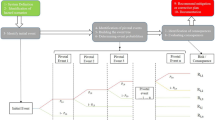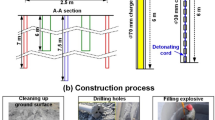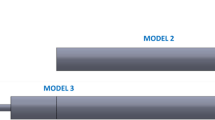Mathematical models of the corrosion destruction of protective barriers of nuclear and radiation hazardous objects in the marine environment and the software tools developed for predicting the time of destruction and possible consequences of depressurization with pollution of the marine environment are analyzed. The models are based on the idea of an assemblage of protective barriers in the form of a directed weighted graph. Optimized algorithms taking into account the stochastic properties of corrosion made it possible to develop software tools in client-server architecture to estimate the time to complete destruction of protective barriers and the rate of release of radionuclides into the marine environment.
Similar content being viewed by others
References
GOST 5272-68, Corrosion of Metals: Terms, IPK Izd. Standartov Moscow (1968).
I. I. Ashcheulova, Corrosion-Electrochemical Behavior of Iron-Chromium-Silicon Stainless Ferrite Alloys: Dissert. Cand. Techn. Sci., NIFKhI, Moscow (2010).
A. A. Gerasimenko (ed.), Handbook: Protection against Corrosion, Aging, and Bio-Damage of Machinery, Equipment and Structures, Mashinostroenie, Moscow (1987), Vol. 1.
K. R. Tarantseva, “Models and methods for predicting pitting corrosion,” Fizikokhim. Pov. Zash. Mater., 46, No. 1, 98–106 (2010).
Application of Full-Factorial Experiments in Research: Guide, VolgGTU, Volgograd (2008).
V. V. Skorchelletti (ed.), Corrosion of Metals, Goskhimizdat, Moscow (1952).
A. A. Sarkisov, S. V. Antipov, V. P. Bilashenko, et al., “Mathematical model for assessing the technical state and predicting the destruction of protective barriers of submerged radiation-hazardous objects,” At. Energ., 124, No. 2, 99–104 (2018).
A. A. Sarkisov, S. V. Antipov, V. P. Bilashenko, et al., “Consideration of the stochastic nature of the processes of corrosion destruction as applied to sea-based facilities, including radiation hazardous submerged facilities,” At. Energ., 125, No. 4, 213–217.
A. A. Sarkisov, Yu. V. Sivintsev, V. L. Vysotskii, et al., Atomic Legacy of the Cold War at the Bottom of the Arctic. Radioecological and Technical/Economic Problems of Radiation Rehabilitation of the Seas, IBRAE RAN, Moscow (2015).
I. E. Somov, “On raising the nuclear submarine K-27 to reduce nuclear and radiation risk in the North-West region,” Materials of the IAEA Contact Expert Group (CEG), Oslo (2011).
S. Skiena, Algorithms and Development Guide [Russian translation], BKhV-Petersburg, St. Petersburg (2011).
Development of Methods for Calculating the Rates of Destruction of Protective Barriers of Submerged and Floating Objects with SRW and Assessment of the Release of Harmful Substances into the Environment, TsNII KM Prometei, St. Petersburg (1997).
E. S. Wentzel, Probability Theory, Nauka, Moscow (1969), 4th ed.
A. A. Sarkisov, V. A. Sotnikov, S. V. Antipov, et al., “Optimization of a stochastic model of corrosion destruction of protective barriers in the marine environment for the operational assessment of their condition and simulation of technical solutions,” Izv. RAN. Energet., No. 4, 130–135 (2019).
Author information
Authors and Affiliations
Corresponding author
Additional information
Translated from Atomnaya Énergiya, Vol. 130, No. 1, pp. 7–13, January, 2021.
Rights and permissions
About this article
Cite this article
Sarkisov, A.A., Antipov, S.V., Bilashenko, V.P. et al. Mathematical Modeling of Corrosion Damage of Marine Objects. At Energy 130, 6–12 (2021). https://doi.org/10.1007/s10512-021-00765-0
Received:
Published:
Issue Date:
DOI: https://doi.org/10.1007/s10512-021-00765-0




